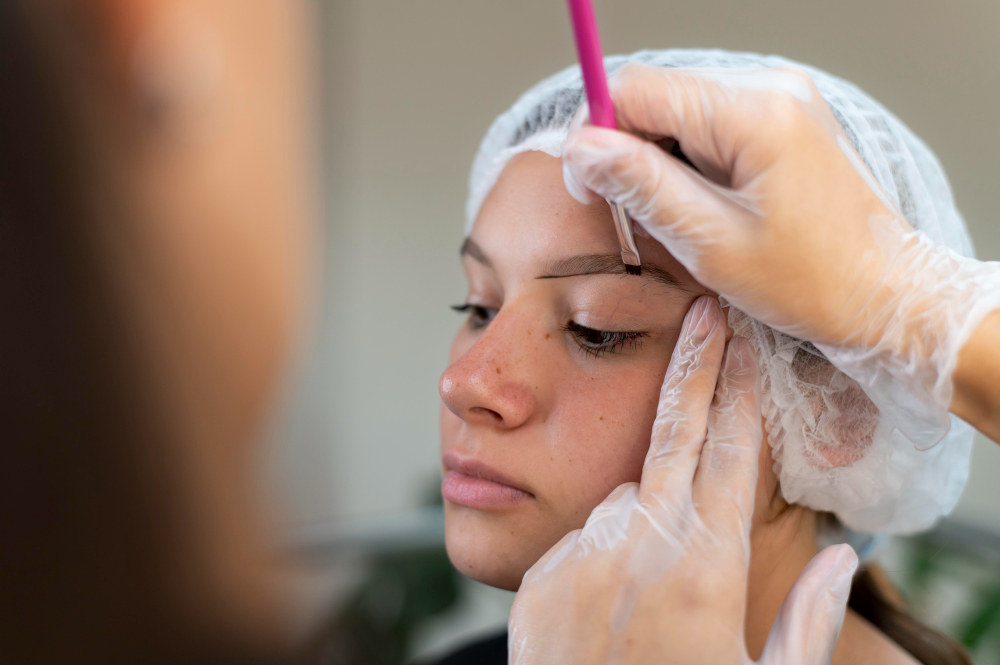Let’s Understand the microblading healing process for oily skin. Microblading is a popular semi-permanent makeup technique that enhances the appearance of the eyebrows. However, if you have oily skin, you may find the healing process a bit different from what others experience.
This blog post will guide you through the key stages and tips for managing the microblading healing process on oily skin, using simple language and a structured format for easy understanding.
What is Microblading?
Microblading is a form of tattoo artistry in which pigment is implanted under the skin with a manual handheld tool instead of a machine. It involves drawing individual strokes that look like natural eyebrow hairs. This method is highly favoured for its natural-looking results.
The Healing Process: What to Expect?
Oily skin can influence the healing process of microblading, often causing the pigment to fade faster and the strokes to blur. Here’s a breakdown of what to expect:
Week 1: Initial Healing
- Day 1-3: You’ll notice swelling and redness. The eyebrow area will be extremely dark.
- Day 4-7: Swelling decreases, and the color starts to lighten as scabs form.
Week 2: Scabbing and Flaking
- Day 8-14: Scabs start flaking off. Avoid picking at them to prevent pigment loss.
Week 3-4: Color Settling
- Day 15-28: The color appears softer and more natural as your skin heals completely.
Special Considerations for Oily Skin
It presents unique challenges in Oily Skin Microblading Healing Process:
- Faster Fading: The excess oil production can cause the pigment to fade quickly.
- Blurring: There’s a higher chance of the strokes blending, creating a less defined look.
Tips for Managing Microblading on Oily Skin
- Follow Aftercare Instructions Diligently:
- Keep the area clean and dry.
- Avoid skincare products that contain oils on the brows.
- Touch-Ups:
- Schedule touch-ups sooner than recommended for other skin types, typically around 8-12 months.
- Choose an Experienced Technician:
- Work with someone who has experience with oily skin.
- Preparation Before the Procedure:
- Avoid using skin products that increase oil production a week before the procedure.
Aftercare Routine: Simple Steps to Better Results
Here is a simple table that outlines an effective aftercare routine to enhance the longevity of your microblading results on oily skin:
| Period | Care Steps |
|---|---|
| First 24 Hours | Avoid water and sweat; apply healing gel |
| Day 2 to Day 7 | Clean gently; apply prescribed ointment |
| Week 2 to Week 4 | Avoid makeup; minimal touching |
Also, Read How Long Does Microblading Last on Oily Skin?
Microblading Aftercare for Oily Skin
Proper aftercare is crucial for ensuring the longevity and appearance of your microblading, especially if you have oily skin. Here are some tailored tips:
- Avoid Excessive Moisture: Keep your brows as dry as possible to prevent the pigment from spreading.
- Use Recommended Products: Use products recommended by your technician that are less oily and designed to protect the pigment.
- Touch-Ups: Plan for earlier and possibly more frequent touch-ups, as oily skin may cause the pigment to fade faster.
Is Microblading Worth It If You Have Oily Skin?
While oily skin can present challenges, such as faster fading and potential blurring of strokes, microblading can still be worthwhile if you adjust expectations and commit to proper aftercare. Finding a skilled technician with experience in oily skin is key to getting the best results.
What Skin Type Is Best for Microblading?
Dry to normal skin types are generally the best candidates for microblading because they typically retain pigment better and have less risk of blurring. These skin types allow for crisper lines and longer-lasting results.
Microblading Alternatives for Oily Skin
If microblading doesn’t seem like the right fit for your oily skin, consider these alternatives:
Powder Brows
This technique uses a machine to create a soft, powdered effect that looks like eyebrow makeup, which can be better suited for oily skin.
Combination Brows
A mix of microblading and powder brows, this technique can offer durability and definition and is well-suited to oily skin.
Does oily skin affect microblading?
Yes, oily skin can affect microblading by causing the pigment to fade faster and possibly blur the fine lines of the brows.
Does oil fade microblading?
Oil can indeed accelerate the fading of microblading, as excess oil tends to dilute the impact of the pigments used.
Is a combination brow good for oily skin?
A combination brow, which includes both microblading and powder fill, can be particularly effective for oily skin as it defines microblading with the staying power of powder fill.
What happens if you sweat during microblading healing?
Sweating during the healing process can lead to issues such as infection, pigment dilution, and uneven healing. It’s best to avoid heavy exercise and direct sun exposure that could cause excessive sweating during the initial healing period.
Can oily skin ruin microblading?
It cannot ruin, but it can affect how well the pigment holds and its clarity over time.
How often do I need a touch-up if I have oily skin?
Generally, every 8 to 12 months, depending on how your skin retains pigment.
Is microblading painful?
Discomfort is minimal. Most clients describe it as a light scratching feeling.
By understanding the unique aspects of the microblading healing process for oily skin and following the tips provided, you can enjoy beautiful, well-defined brows. Remember, the key to great results is not just the procedure itself but how well you take care of your brows during the healing phase.

